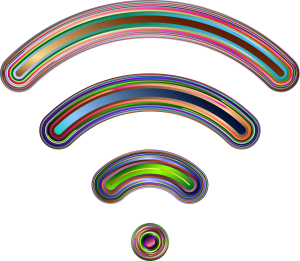Who Needs a Wireless Microphone?
The Wired Audiologist
Peter Stelmacovich, MCl Sc, is a hard of hearing audiologist who works for a Canadian manufacturer. In Peter’s column, The Wired Audiologist, he discusses many of the issues that affect him personally as both a hard of hearing consumer and an audiologist.
 I recently had a conversation with a delightful, kind, and caring audiologist with her AuD. We were discussing candidacy for additional wireless microphone systems to complement hearing aids for her clients.
I recently had a conversation with a delightful, kind, and caring audiologist with her AuD. We were discussing candidacy for additional wireless microphone systems to complement hearing aids for her clients.
She expressed the opinion that very few of her clients are candidates for additional wireless microphone systems. She considered these additional microphones as "niche" products appropriate for only younger adults with poor word identification scores. The number of candidates in her opinion was likely less than 1% of her caseload.
This opinion is not uncommon. In my travels, I encounter variations on this theme quite often. However, nothing could be further from the truth. The reality is that in some practices, the number of potential candidates for adaptive wireless microphones could be as high as 40%. Here’s why.
- Severe Losses. Hearing aid industry data shows 20–30% of hearing aids are sold to people who have a severe loss or greater. And we know (or at least ought to know) that clients with severe losses need a signal to noise ratio of at least 15 dB in order to understand speech. Given that directional microphones at the ear level provide 4-5 dB of SNR improvement and binaural directional microphones provide about 8 dB SNR improvement, the only technology available that can provide the SNR needed in the near field is a wireless microphone system.
- Limitations of Hearing Aid Microphones. Hearing aid microphones work best in a 2-meter range. In other words, the near field. Some people need to hear and understand speech in distances greater than this. This is what we refer to as the far field. This is where wireless microphones perform the best. If the far field speech is in quiet, then most Bluetooth microphones will work well; however, in noisy far field environments, an adaptive digital remote microphone will work best.
- Some clients have greater difficulty in noise, far more than their audiograms would predict. Speech in noise tests such as the LiSN-S PGA (Listening in Spatial Noise Test), QuickSIN, or HINT will help identify who these clients are.
Taken together, we can easily see that the number of candidates for wireless microphones could be as high as 40%. Not less than 1% as so many audiologists seem to think.
I am not entirely sure why our profession continually underestimates the number of potential wireless microphone candidates. We have numerous peer-reviewed articles providing evidence to this fact.
There is no doubt that we are very well trained to assess hearing. And we are well trained to fit a hearing aid. No other profession can do this as well as us. However, we need to think in terms of function in everyday life. We cannot just fit the hearing aid well and hope it meets all the client’s needs.
There are significant gaps in knowledge in audiology graduates as well. Every audiologist should know the signal to noise ration required to understand speech for different degrees of hearing loss. They should also know that one should still assess speech in noise since the audiogram is still not always the best predictor. Finally they should know how well different technologies improve SNR.
At the very least, let’s make sure we introduce wireless microphone technology to clients with severe losses. I am not naïve to think that 100% of all clients with severe losses will use wireless microphones in addition to hearing aids. However, let’s make it a goal to introduce this concept to these clients and help them make an informed decision.

